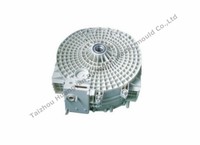Categories
Tags
-
#Air Cooler Mould
#Dustbin Mould
#Crate Mould
#Household Product Mould Manufacturer
#Chair Mould
#Trash Can Mould
#Table Mould
#Stool Mould
#Car Parts Mould
#Plastic Mould Factory
#trash can mould crate mould
#crate mould trash can mould
#air cooler mould dustbin mould
#table mould household product mould
#air cooler mould dustbin mould
#dustbin mould air cooler mould
Archives
How Should You Choose The Material Of The Table Mould
-
The durability of the Table Mould has a great relationship with its materials, so we must pay attention to the selection of mould materials. Generally speaking, the mould materials should have the following properties:
1. High corrosion resistance
Many plastic additives, such as flame retardant, and even the chemical action of the melt itself will corrode the cavity of the table mould. When the plastic raw materials are mixed with fillers and reinforcing materials containing abrasives, it is more likely to aggravate the damage of the mould. Therefore, it is best to use corrosion-resistant steel, or carry out surface electroplating treatment, chrome plating or nickel plating on the table mould.
2. Good thermal conductivity
In injection moulding, good mould temperature control has great influence on the quality of plastic parts, especially when processing semi-crystalline thermoplastics. Generally, copper alloy has much better thermal conductivity than alloy steel, but its elastic modulus, hardness and durability are lower. Insufficient thermal conductivity of steel can be compensated by cooling system.
3. High wear resistance
In order to increase the rigidity and mechanical properties of plastic parts, glass fibers and inorganic fillers are widely used in the plastic formula to reinforce them. After adding these additives, they enter the mould cavity together with the melt at high speed, causing great friction to the mould cavity. If the mould material is not wear-resistant, it is easy for the mould cavity to be excessively worn. Therefore, the materials used to make this kind of mould should have better wear resistance.
4. Good polishing performance
The inner wall of mould cavity is very demanding, and its roughness is very small, so as to meet the requirements of good glossiness of plastic parts. Therefore, the mould cavity is generally polished, and the brighter the surface, the better. Therefore, the mould material is required to be easy to polish, and the selected material should not contain defects such as impurities and pores.
5. Good dimensional stability
During the moulding operation of the table mould, the temperature of the mould cavity should reach above 300℃, and the temperature difference is so large that the cavity structure will change microscopically, which will cause the mould size change and make the plastic part size unstable. Therefore, the tool steel with proper tempering treatment, namely heat-treated steel, can be selected. In order to improve the hardness and wear resistance, the mould is generally heat treated. However, the influence of this heat treatment on the size of the mould should be minimized. Pre-hardened steel that can be machined can be used, and this steel does not need heat treatment after machining.
Crate Mould is also our hot product, you can click our website: https://www.furnituremould.com/

